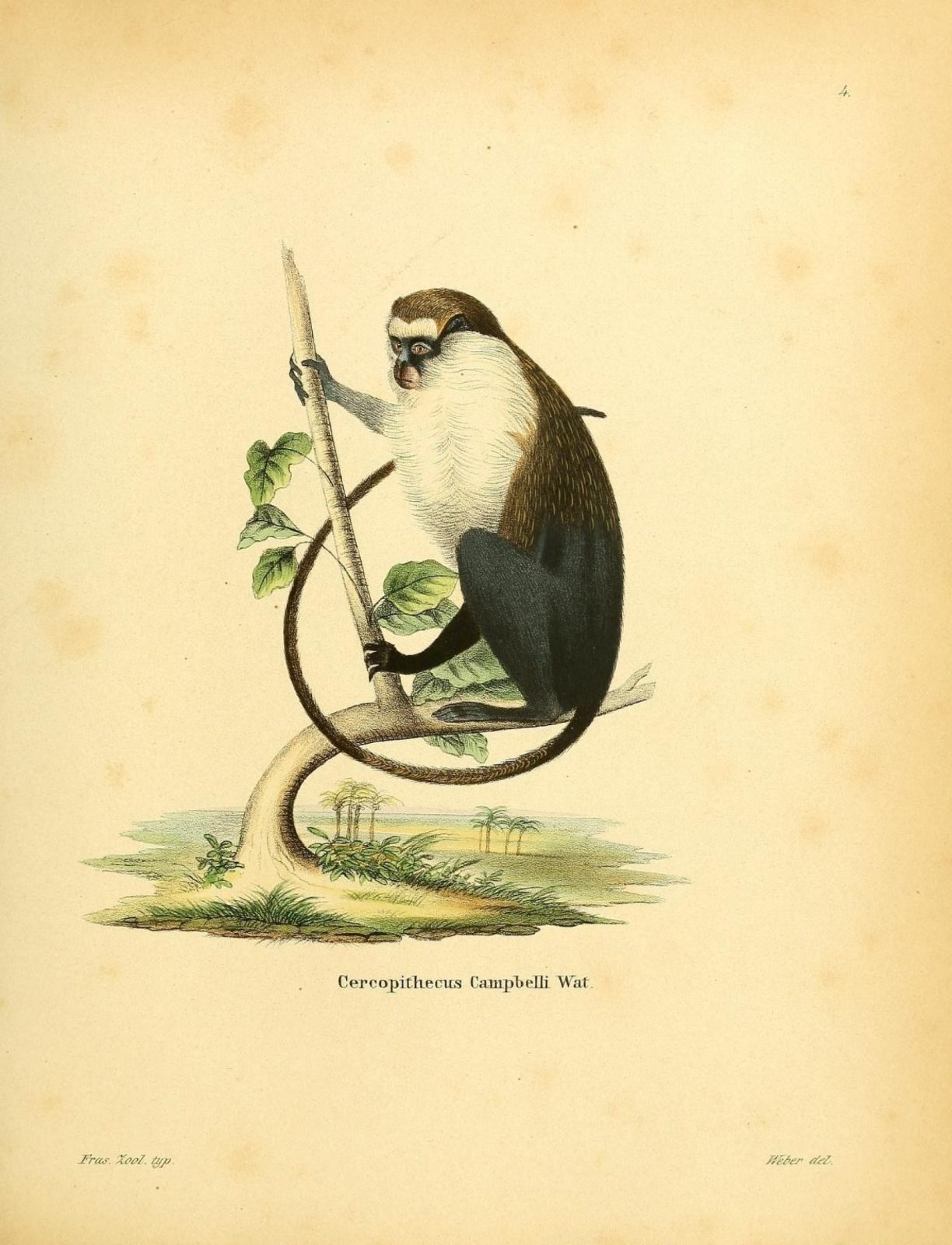
Campbells mona monkey
Campbell’s mona monkey, also known as Campbell’s guenon and Campbell’s monkey, is a species of primate found in the Ivory Coast, Gambia, Ghana, Guinea, Guinea-Bissau, Liberia, Senegal, and Sierra Leone. It was named for Henry Dundas Campbell, in 1838. Lowe’s mona monkey was previously considered a subspecies of Campbell’s mona monkey. The IUCN has rated this species as being a near-threatened species because it has a wide range and is able to adapt to degraded habitats.
Its habitat is lowland forest, both primary and secondary, gallery forest, mangrove swamps, agricultural land and scrubland.
Campbell’s mona monkey is a species which lives in groups of 8-10, defending their region from other groups. Around dawn and dusk, the dominant male climbs to a perch on an emergent tree and issues a series of booms. The sound carries for at least a kilometre, and other males join in. This monkey often associates with monkeys of other species and engages in inter-species territorial calling which obey certain ritual rules. This species has one of the more advanced forms of animal communication, with a rudimentary syntax.
Campbell’s mona monkey is a forager. The greater part of its diet is wild and cultivated fruit, but it also eats seeds, invertebrates, grubs, small amphibians and lizards.
